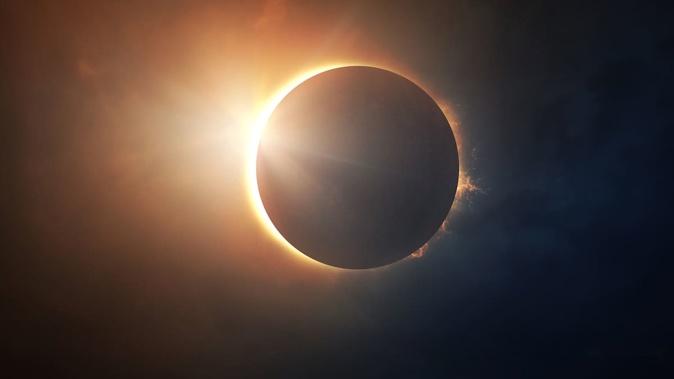
New Zealand will see its own solar eclipse - but unlike the United States, we’ll have to wait a while.
On a winter afternoon a little over four years from now, the moon will pass in front of the sun and plunge a narrow strip of the lower South Island into near-total darkness for close to three minutes.
On July 22, 2028, Dunedin and Queenstown will be the only major centres in the country to experience a total solar eclipse, though the rest of the country will be able to observe a partial eclipse.
The last solar eclipse to grace this part of the country was 1163 - over 100 years prior to human settlement of New Zealand.
While the rest of New Zealand, including Auckland, will be able to observe a partial eclipse, Dunedin and Queenstown will observe the celestial phenomenon for two minutes and 51 seconds from 4.17pm.
Kiwis and Aussies will have to wait until 2028 for the next total solar eclipse. Photo / Fred Espenak, Nasa GSFC
Before the eclipse reaches New Zealand, parts of Australia will experience it in totality as the central line of its path crosses over Western Australia, the Northern Territory, southwest Queensland and New South Wales - including the centre of Sydney, where it will last for over three minutes.
University of Otago physics research fellow Dr Jonathan Squire said the solar eclipse’s path of totality was a narrow area, which Dunedin was lucky enough to be in.

Deputy Prime Minister Winston Peters looks at the April 9 solar eclipse while in New York.
“The path of totality, which is what happened in the States yesterday, is when the moon completely blocks out the whole disc of the sun and it goes pretty dark and the birds stop chirping and things get really quiet for a few minutes,” he said.
“The partial eclipse is much wider, that’s going to come to the whole of New Zealand, and that’s basically when the moon blocks out only part of the sun ... During a partial one, it’s actually a little hard to even notice what’s going on unless you have eclipse glasses.
“The partial solar eclipse will be fun to see, but it’s not nearly as spectacular as the total.”
Ben Tomsett is a multimedia journalist for the New Zealand Herald, based in Dunedin.
This story was originally published on the Herald, here
Take your Radio, Podcasts and Music with you









